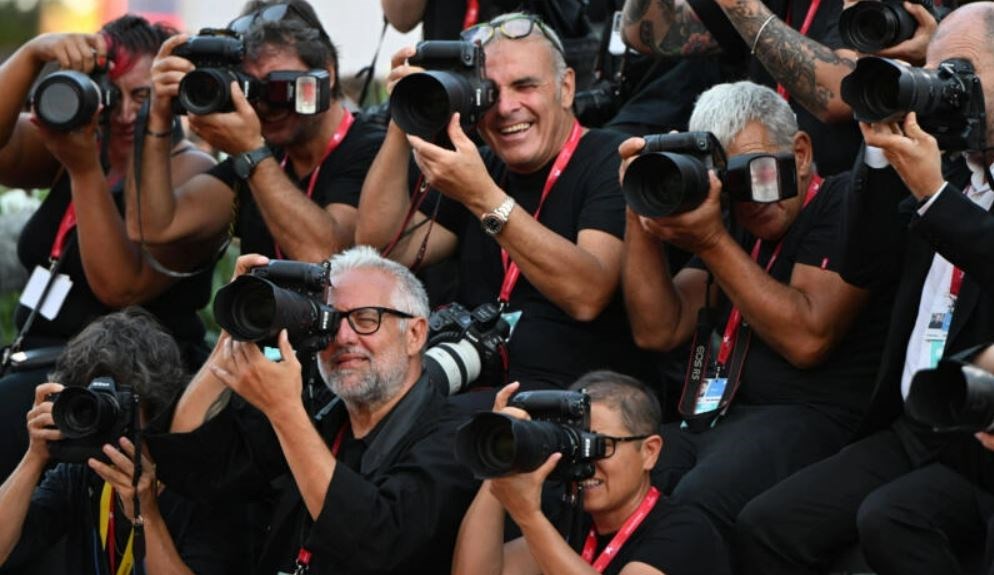Wallace and Gromit brought back to life via VR in Venice
The innovative concept, created by VR pioneers Felix and Paul Studios, has seamlessly merged printed pages with moving 3D images, offering a unique and immersive reading experience.
-

Photographers at Venice Immersive (AFP)
In Venice this week, the rapid advancement of virtual reality technology was manifested as visitors were offered immersive experiences such as stepping into the world of Wallace and Gromit and witnessing the book coming to life right before their eyes.
Held in parallel with the world's oldest film festival, Venice Immersive takes place on a former quarantine island, annually transforming it into a platform for showcasing the latest frontiers in entertainment.
This year's event highlighted the swift progress of VR technology. Some experiences enabled users to interact with virtual environments using hand controllers, as seen in "Wallace & Gromit in The Grand Getaway," where participants immersed themselves in the animated world of the beloved duo, taking on the role of Gromit and assisting in fixing their owner's quirky contraptions while rescuing them from an accidental trip to Mars.
Venice Immersive co-curator Michel Reilhac noted the increasing precision and diversity of interactivity in these virtual worlds, with creators discovering innovative ways to leverage the technology.
Another VR experience transported multiple users at once into the studio of Spanish architect Antoni Gaudi, allowing them to explore his workspace and witness the spectacular rise of his iconic Barcelona cathedral.
Artificial intelligence (AI) also played a significant role, as one experience combined two AI applications, ChatGPT and Midjourney, to engage users in deep conversations before generating a personalized story and imagery based on their responses.
When technology and art meet
One of the most technologically impressive experiences at the event was Jim Henson's The Storyteller. Visitors put on augmented reality glasses, allowing them to witness a 3D film coming to life within a special book they held, seamlessly transitioning through various chapters as they turned the pages.
This innovation is the making of VR pioneers Felix and Paul Studios, renowned for their immersive tours of places like the International Space Station and LeBron James' training sessions. Co-founder Paul Raphael described the interactive book as a "leap of faith," aiming to realize the potential of what an augmented book could be, pushing technology to its limits.
The glasses' cameras scan the pages' surface and continuously track their position in real-time. An algorithm utilizes this data to determine precisely where to overlay the dynamic 3D images, demanding incredible performance and speed.
Raphael believes that with the introduction of new headsets from companies like Apple, augmented books could soon become widely accessible. He acknowledges that this is just the beginning, with plenty of untapped potential to explore, even after a decade of pioneering work in the field.

 3 Min Read
3 Min Read








